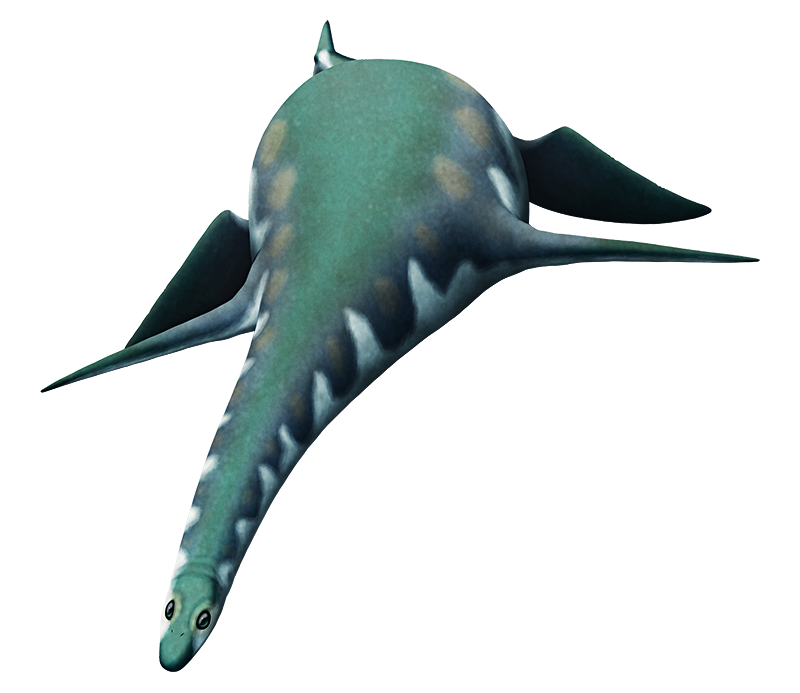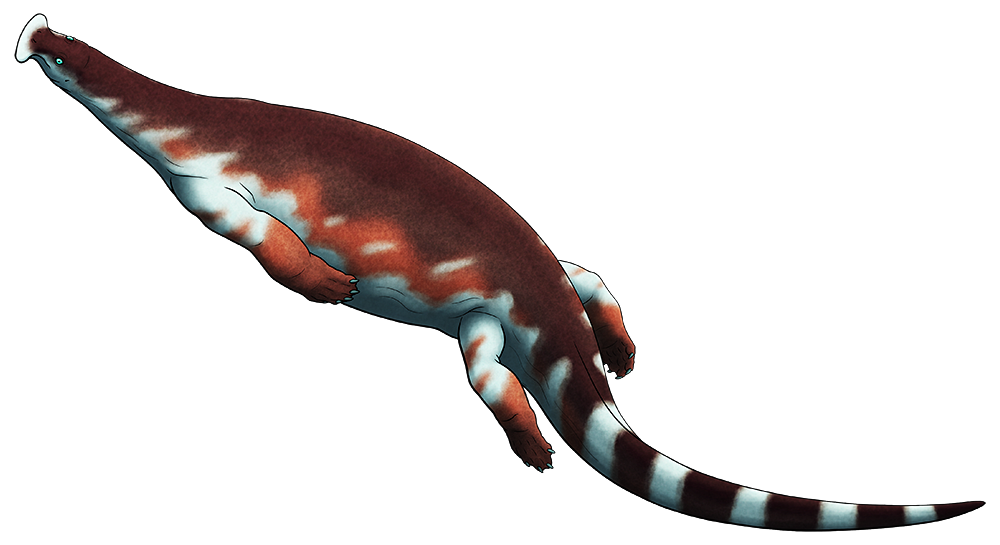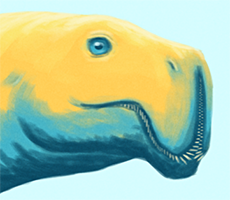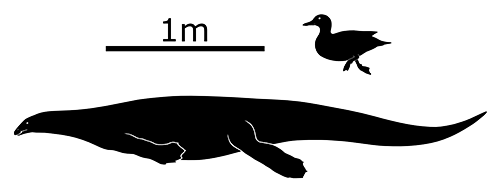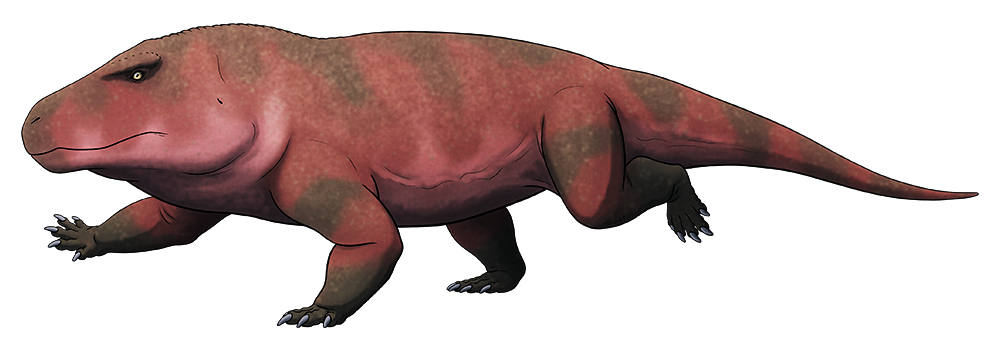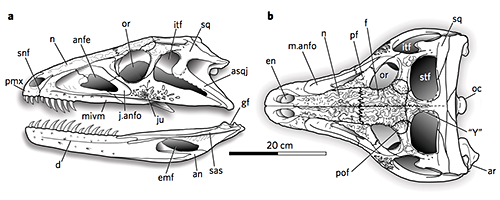The cryptoclidids were fairly standard-looking plesiosaurs, with long necks and small heads – but those tiny skull bones were also rather fragile and so there’s very little good fossil material of their heads, making it difficult to figure out both their feeding ecology and their exact evolutionary relationships.
But a recently-discovered specimen from the Svalbard archipelago actually preserved a mostly-complete skeleton, including an unusually intact skull.
Given the name Ophthalmothule cryostea (meaning “frozen bones of the Northern eye”), this cryptoclidid lived about 145 million years ago, right at the boundary between the Jurassic and the Cretaceous.
It measured around 5m long (16’5″) and had proportionally huge eyes that faced upwards on its head – an adaptation for seeing in low-light underwater conditions, maximizing the amount of light reaching it from above.
Those big dark-adapted eyes suggest it may have been nocturnal, or spent a lot of time diving into very deep waters in search of food. Its skull had weak jaw muscles and delicate teeth, and its gut region contained a lot of fine gravelly sediment, so it probably mainly grubbed around for small soft-bodied prey on the sea floor.
At that point in time Svalbard would have been a little further south than it is today, at a subarctic latitude, but the area would have still experienced particularly long nights during the winter. So it’s possible Ophthalmothule also developed such big sensitive eyes to help it survive through those darker seasons.

